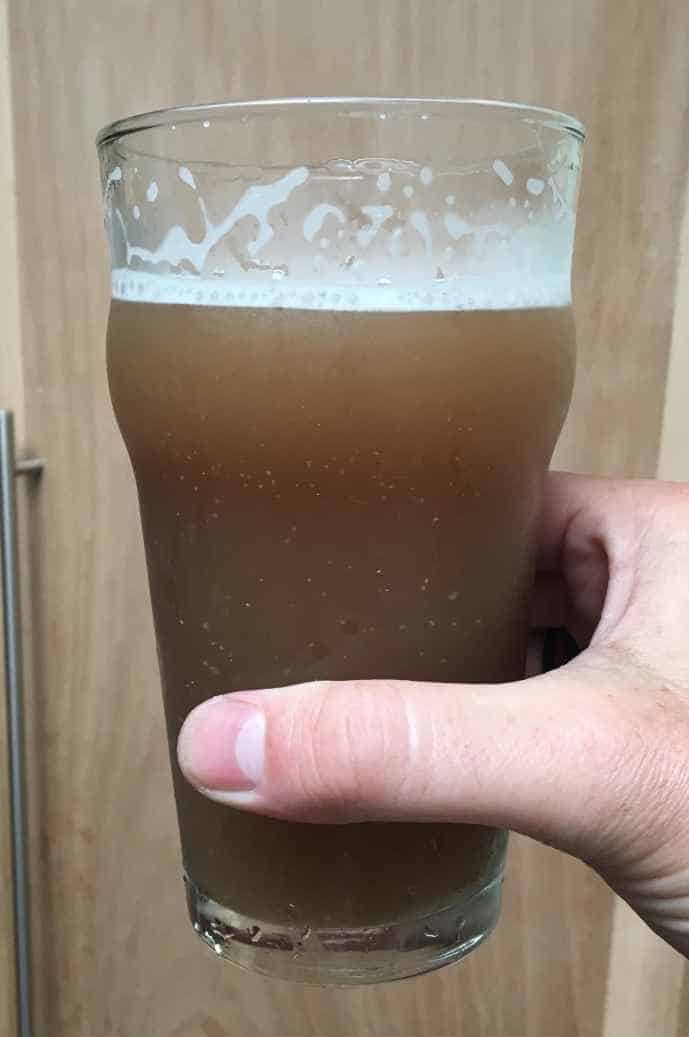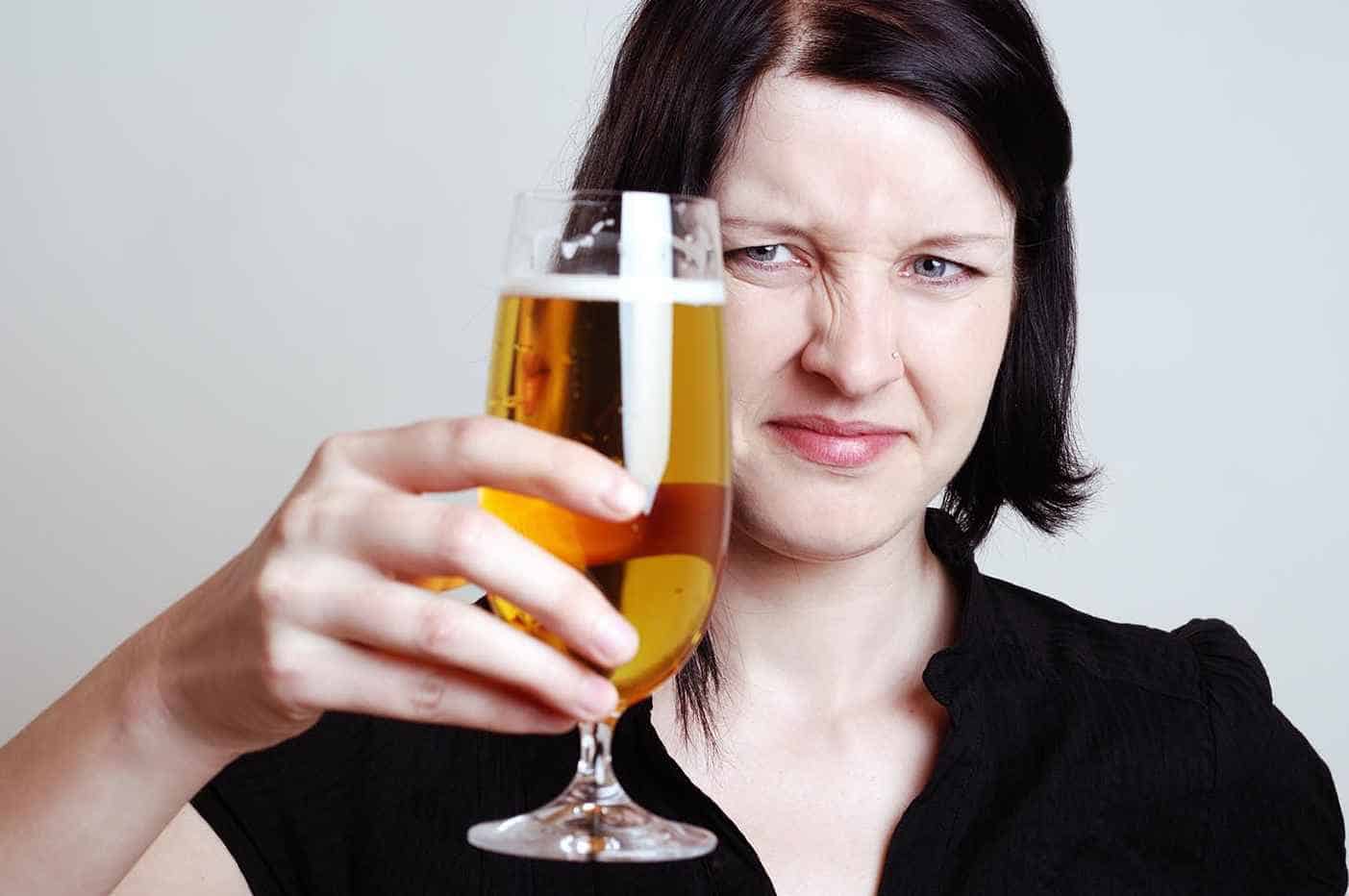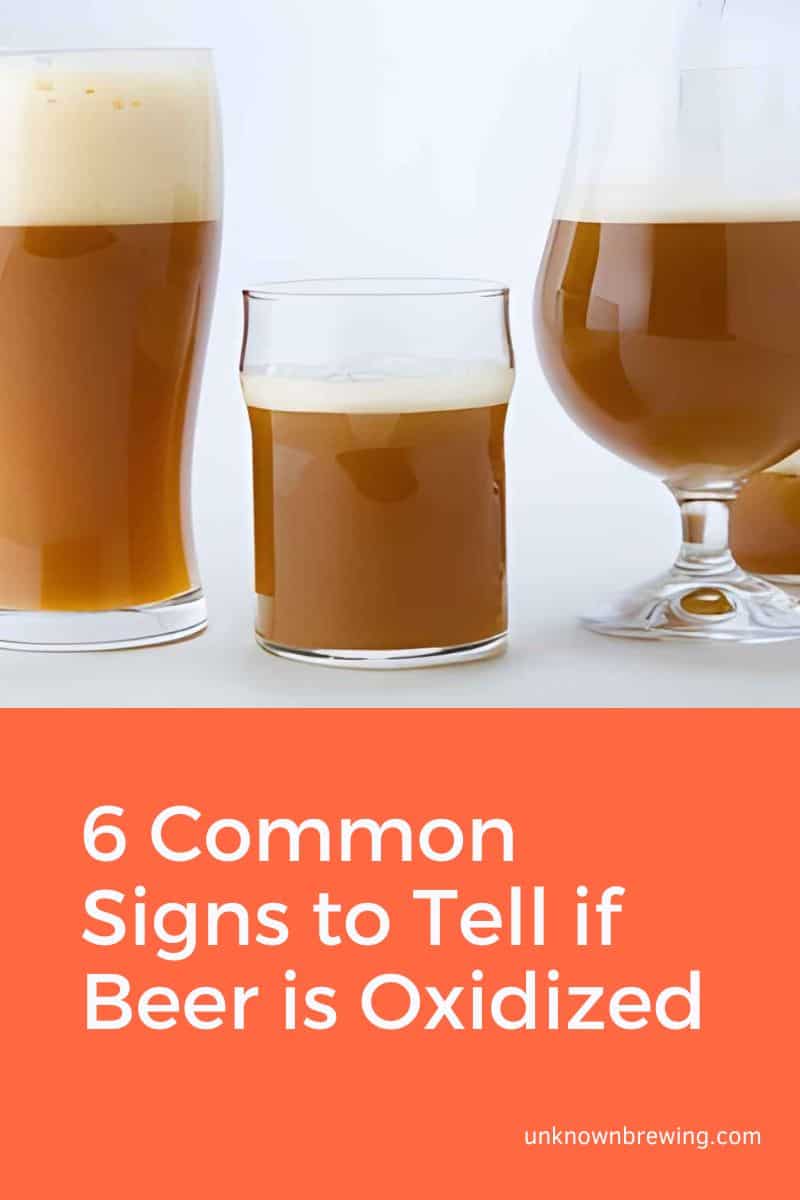Oxidized beer, yuck! It smells like a skunk’s fart and tastes worse. Obviously, I’m exaggerating, but you do get the point. Beer is a very sensitive beverage, and if you don’t take the necessary measures to preserve its quality and freshness (both in production and storage), then its flavor will suffer.
We’re talking about oxidization, people, and how to tell if your beer is oxidized. But before we jump into the good stuff, what is beer oxidization?
What is Beer Oxidation?
Carbon dioxide is a beer’s friend. It is responsible for some of the things that we love about beer, the fizzy taste, the foamy head, and the beer lacing it leaves on our glasses. And it really helps that the beer produces its own carbon dioxide.
Oxygen, on the other hand, is a beer’s enemy; it results in off-flavors, shortens a beer’s shelf life, and tarnishes its appearance. In other words, a beer’s interaction with oxygen causes it to go stale; pale beers can turn a deeper amber and dark beers may become lighter.
Beer oxidizes when air is introduced to the beer during fermentation, aging, or packaging. If your fermentor isn’t as airtight, oxygen in the air gets a chance to interact with your beer. If you fail to purge your kegs, barrels, cans, and bottles with CO2, you’re inviting the air present in these containers to oxidize your beer.
Common Signs of Oxidation
It’s not like oxidized beers come with a sign screaming, “BEER OXIDIZED.” But there are things you should look out for when you suspect a beer of oxidization.
Appearance
When your beer gets oxidized, the first thing you notice is a change in its appearance. And by this, I mean your brewing process does not yield (appearance-wise) the beer you were expecting.
Some of the aspects of your beer’s appearance that are likely to change include color, clarity, and carbonation. Let’s look at these aspects and how beer oxidization affects them.
1. Beer Color Changes
When your beer oxidizes, it loses its shine. Hops are responsible for brightening the colors of beer. Oxidation destabilizes hop compounds, and the color fades. he beer develops a rustic, almost orange appearance, but even that depends on the beer style.
How about we look at how different beer styles change when they get oxidized?
| Beer Styles | Appearance Before Oxidization | Appearance After Oxidization |
| Pale Ales & IPAs | Bright golden to amber colors | Golden colors turn to amber
Amber colors turn pale brown |
| Pilsners & Lagers | Pale straw to light gold colors | Turns to deep gold
Sometimes, they turn brown |
| Stouts & Porters | Deep brown to black colors | Severe oxidation dulls the dark colors |
| Wheat Beers & Hefeweizens | Hazy light straw to golden colors | Turns yellow to brown with a cloudier character |
| Red Ales & Amber Ales | Bright reddish amber tones | The redness disappears
Turns more amber to brown |
2. Beer Clarity Changes
Oxidation causes beers to grow hazy or cloudy. Clear beer styles like Lagers, Pilsners, Pale Ales, and some IPAs get hazy or cloudy. Cloudy beer styles like Wheat Beers and hefeweizens grow cloudier.
3. Beer Carbonation Changes
When you invite oxygen into your beer, it displaces carbon dioxide. That means that carbonation and all the benefits of CO2 go with it. Oxidized beers do not form a head on your beer glass; they leave no beer laces, either. They taste flat or muted, and they are more likely to grow mold.
Aroma
Beer aroma is another indicator of stale or oxidized beer. Instead of the malty, fruity, earthy, or floral aromas you’re used to, oxidized beers hit you with funny (sometimes repulsive) odors.
Below are some common smells synonymous with oxidized beers:
- Cardboard Smell: When oxidation breaks down hop compounds, hop aroma falls apart. What you’re left with is this odor that resembles the smell of cardboard.
- Sherry-like Smell: High-alcohol brews or those aged in barrels may take on a sherry-like smell once oxidation takes effect.
- Wet Paper Smell: Oxidation may also cause your beer to take on the smell of damp or musty paper; yuck!
- Stale Smell: Oxidation causes beer to lose its freshness. And when that happens, a stale aroma takes hold.
- Nutty Aroma: In some cases, oxidized beers take on a nutty (almost almond-like) smell.
Flavor
In many cases, beer aroma is consistent with beer flavor, and the same is true with oxidized beers. Most of the aromas we’ve discussed above persist in the beer’s flavor.
Below are some of the tasting notes you can expect from an oxidized beer:
- Cardboard or papery taste
- Sherry-like tasting notes
- Loss of hop flavor
- Muted malt flavors
- Increased beer sweetness
- Faded or stale beer flavor
Mouthfeel
Now let’s see how oxidation affects a beer’s mouthfeel:
- Flatness:Oxygen dispels carbon dioxide, leaving behind a flat beer with no fizziness.
- Cardboard-like Mouthfeel:Beers with wet paper and cardboard-tasting notes are described as having a Paper-Like or Cardboard-Like mouthfeel.
- Thinning:Apart from destabilizing hop compounds, oxidation also disturbs the harmony of malts and their protein structures. Creamy and velvety mouthfeels disintegrate into watery mouthfeels.
- Harsh or Astringent:The byproducts of oxidation may cause a harsh or astringent feeling on your palate.
And how does oxidation affect the mouthfeels of different beer styles? Well, let’s find out:
| Beer Styles | Mouthfeel Before Oxidation | Mouthfeel After Oxidation |
| Pale Ales | Light to medium body
Slightly crisp or smooth |
Flatter and less vibrant mouthfeel |
| IPAs | Medium body
Extremely soft and silky |
Loss of crispiness |
| Porters | Full body
Silky and creamy mouthfeel |
Thinner & less satisfying mouthfeel |
| Stouts | Full Body
Smooth and creamy |
Thin
Harsh & astringent mouthfeel |
| Belgian Tripel | Light to medium body
Creamy mouthfeel |
Flat and thinner mouthfeel |
| Barleywine | Full body
Rich mouthfeel |
Watery and stale
Loss of warming alcohol |
Additional Indicators
The signs we have discussed above require you to open, pour, smell, and probably taste the oxidized beer. But you can avoid that nasty experience by paying attention to these additional indicators.
Packaging-Related Clues
For a beer to be oxidized, it needs contact with oxygen. Sure, some of that oxygen can get in during beer production, but it can also get in through compromised packaging. Not only that, but beer packaging can also inform us of the state of the beer it carries. So pay attention to your beer’s packaging condition before you crack it open and take a sip.
Below are some packaging-related clues that indicate beer oxidation:
- Damaged Bottle Caps and Broken Seals: Always, always inspect your bottle caps and seals before cracking open a beer. A damaged bottle cap could mean oxidized beer or, worse, molded beer.
- Damaged or Dented Bottles and Cans: A puncture on a beer can compromises the safety of your as much as damaged bottle tops do. Inspect your cans or bottles before chugging one.
- Bulging or Swollen Cans: A bulging can could mean more gas. The extra gas could be air.
- Bottle With Excessive Head Space: While beer cans bulge, bottles show excessive head space. Both these signs indicate the possibility of an air leak.
Age and Storage Conditions
The age and storage conditions can also cause us to suspect beer oxidation. Below are some of the things you should look out for:
- Expiration and Best-By Dates: A beer that has lived beyond its best-buy date may be safe to consume, but it is not as fresh as the brewer intended. If it goes beyond the expiry date, it may be stale as the stability of the ingredients has started falling apart. So, always observe expiry and best-buy dates.
- Exposure to Light: Beer is a light-sensitive beverage. Exposure to light may lead to photo-oxidation. In this regard, cans perform better than bottles. And transparent bottles (like Corona and Modelo) are at high risk of catching that photo-oxidation. Always store your bottled beers in a cool and dark room.
Preventing and Minimizing Oxidation
Beer oxidation ruins the flavor, aroma, mouthfeel, and appearance of beer. If anything, oxidation is a brewer’s worst nightmare. But the good news is that beer oxidation is preventable, and these are the things that can save beer from oxidation:
Brewery Practices For Reducing Oxidation During Production
A brewer has the responsibility of ensuring the safety and quality of their brews. Below are the common brewing practices that minimize the chances of oxidation:
- Use quality ingredients
- Take measures to reduce Hot-Side Aeration (HSA)
- Employee closed transfer methods to move wort and beer from vessel to vessel
- Employ carbon dioxide purging
- Store beer in cold and dark rooms
- Use antioxidants like sulfur dioxide and ascorbic acid (in small quantities) to minimize oxidation
- Minimize splashing and agitation to reduce exposure to air
- Regularly monitor dissolved oxygen levels in beer at different stages of production
Consumer Tips for Beer Storage and Handling
As a consumer, you also have the responsibility to protect your beer from oxidation. And below are tips on how to do it:
- Store your beer in a cool and dark place (your fridge)
- If you can’t finish your beer, store it in an air-tight container
- Always buy fresh beer
- Avoid shaking or agitating your beer
- Use inert gases when resealing your unfinished beer
Final Thoughts
Beer oxidation shortens the shelf life of a brewski. Drinking oxidized beer may not give you the flavor and freshness you expect. And on top of that, it is disgusting. And that’s why we thought it helpful to teach you how to identify oxidized beer without enduring this horrid experience.
Did we miss any other indicators? Let’s educate each other in the comment section.

As a homebrewer, Michael would get frustrated about the lack of brewing information on the internet. After hundreds of gallons of spoilt batches, Micheal had enough. And he founded Unknown Brewing as a resource for homebrewers.






